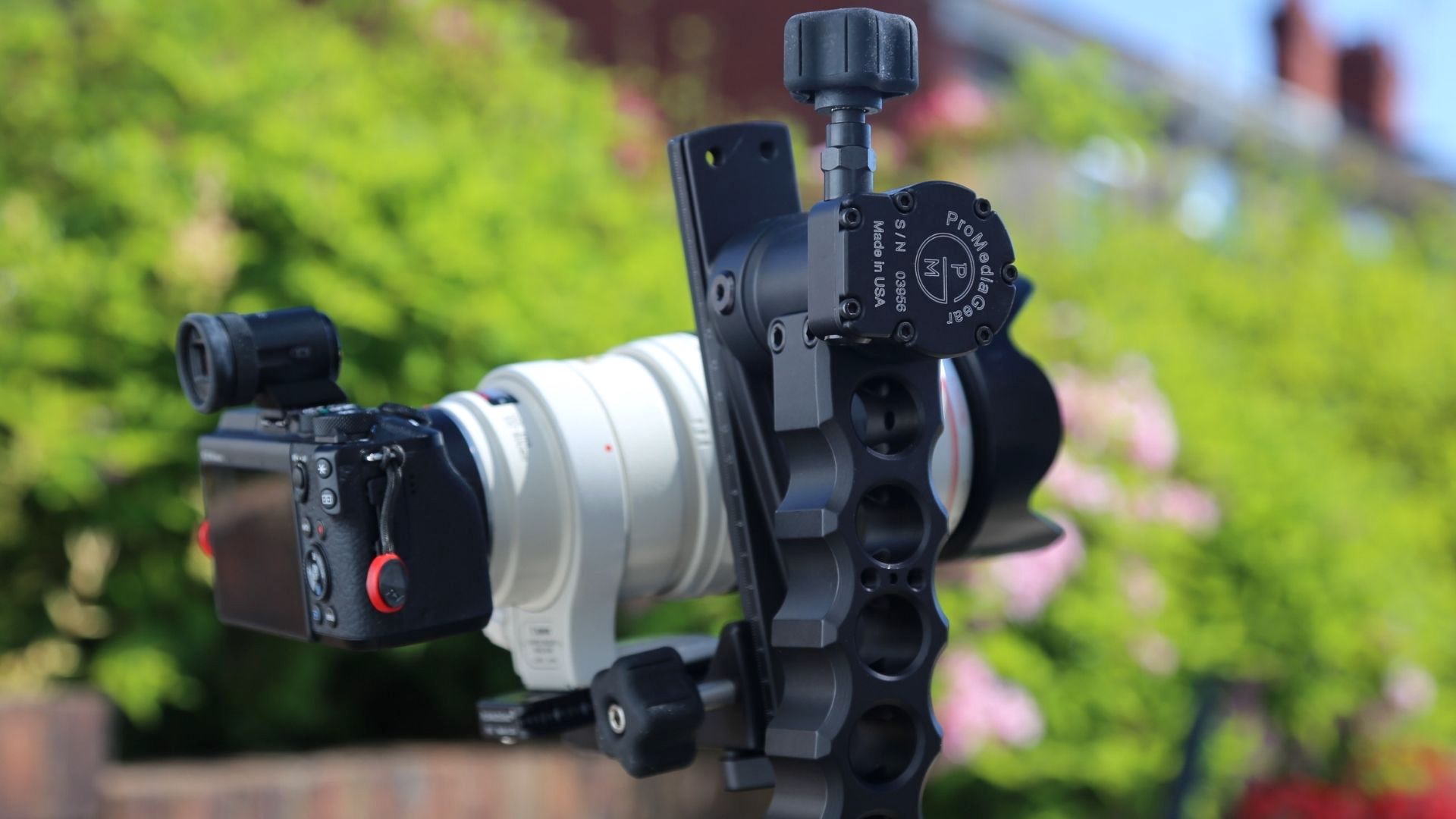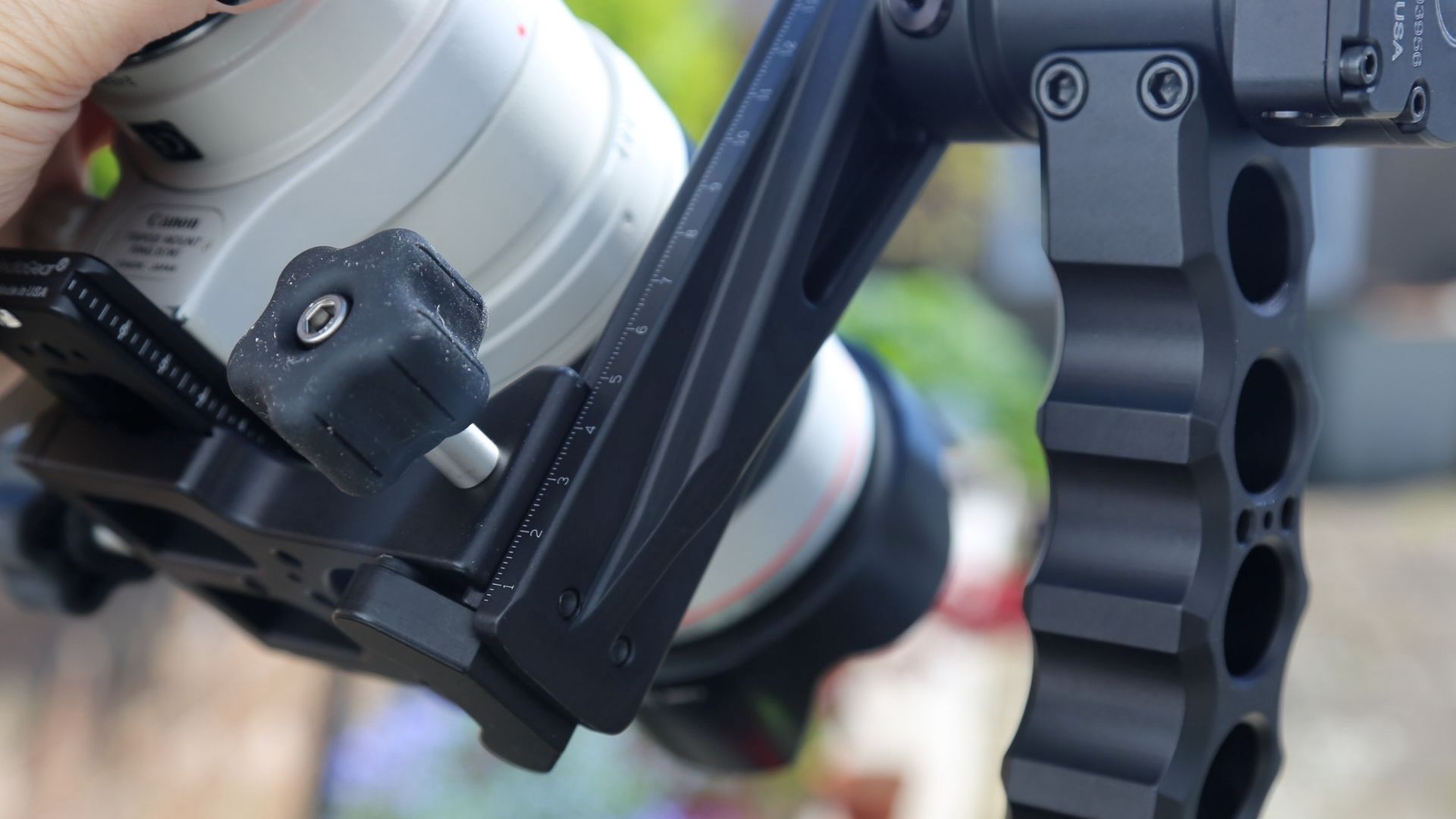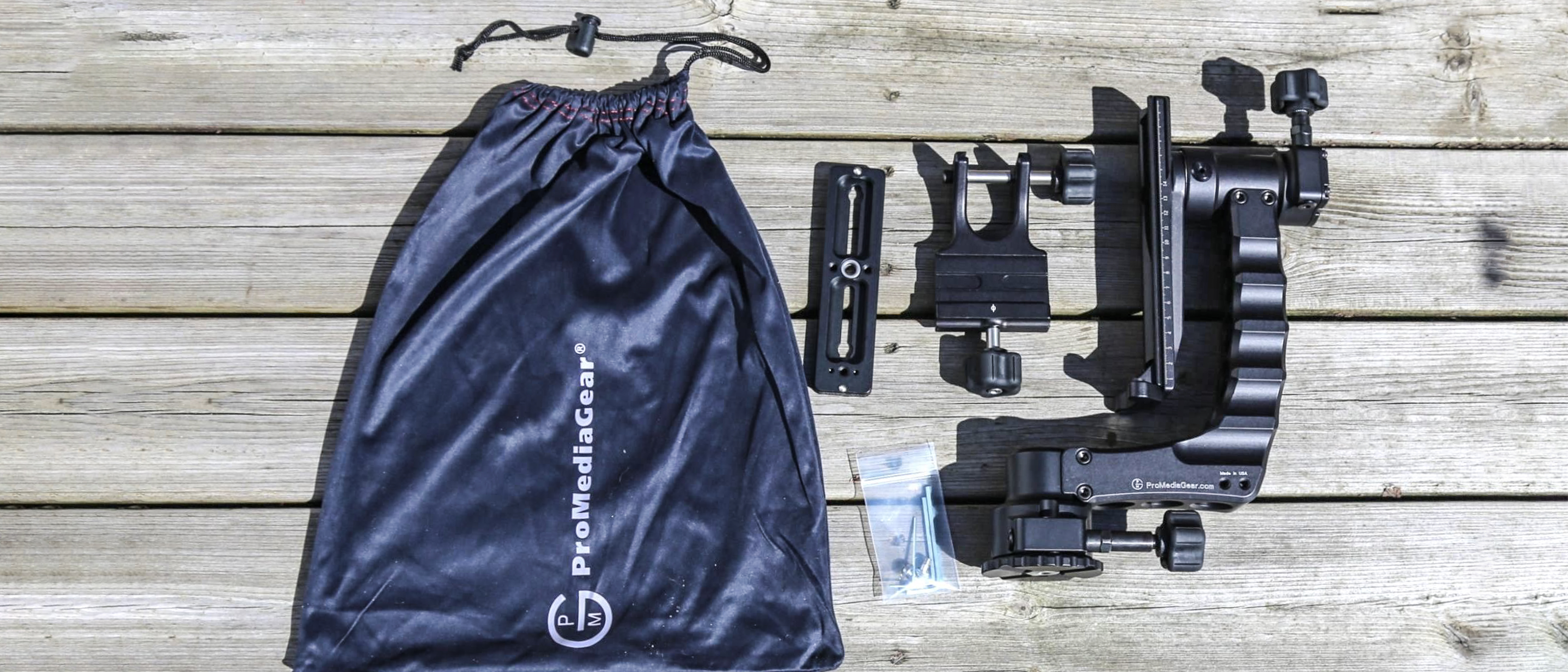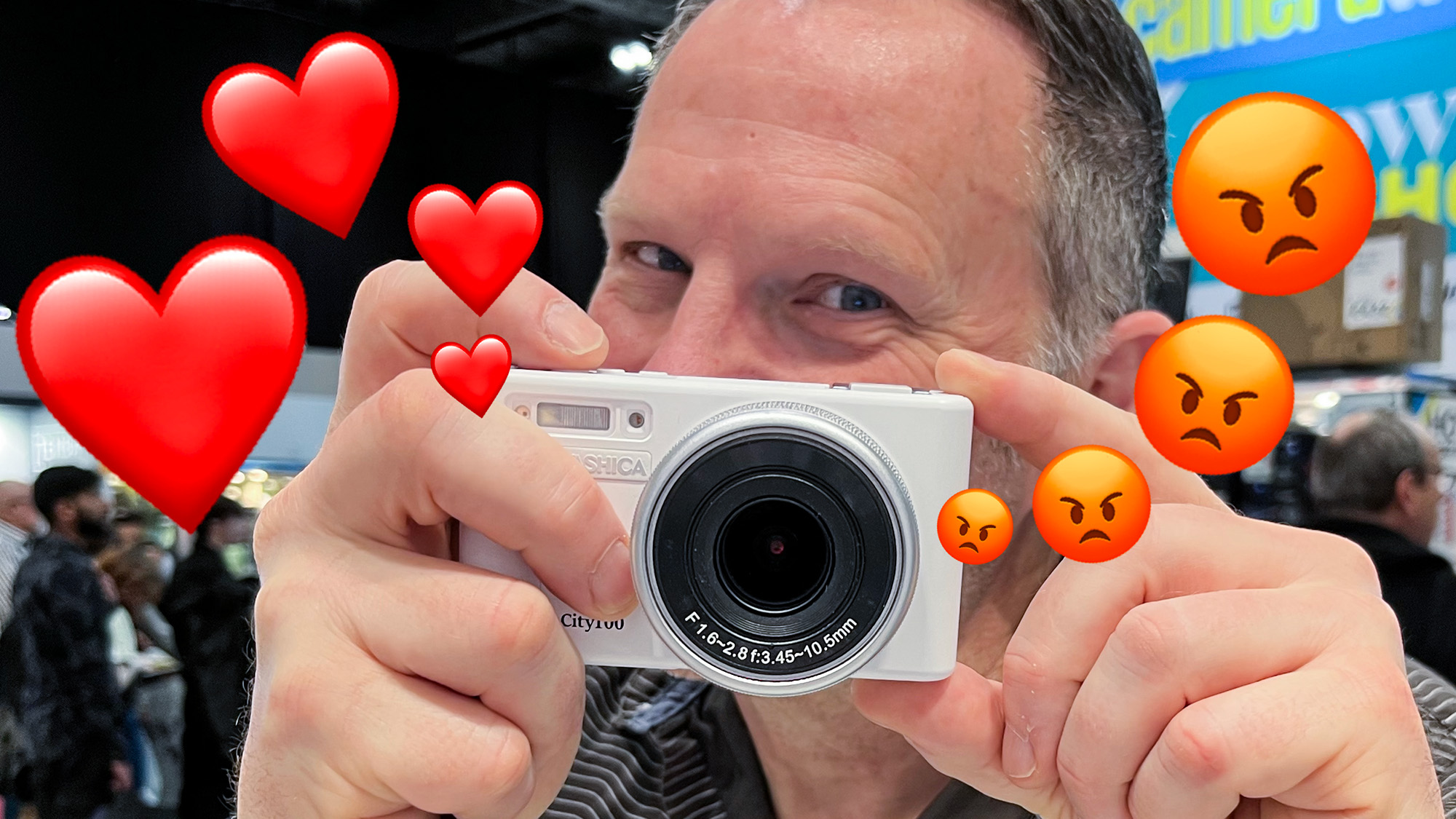Digital Camera World Verdict
If you’re serious about wildlife photography then you'll be tempted by a super-telephoto lens, but likely put off by their weight. This superbly crafted two-part gimbal head supports 600mm+ lenses and makes them easy to to use for long periods without a ball head in sight.
Pros
- +
Easy to set-up
- +
Strong and stable
- +
Smooth pan and tilt
- +
Excellent build quality
- +
Custom friction control
Cons
- -
Heavy to carry
- -
Very expensive
- -
Overkill for most photographers
Why you can trust Digital Camera World
The ProMediaGear Katana is one for the professionals. It’s a speciality gimbal head for a tripod that makes it possible to track a moving subject – chiefly a bird in flight – without making any physical effort. It’s designed for 600mm to 1200mm super-telephoto lenses so can take a heck of a weight – up to a whopping 68kg/150lbs, in fact – and its build quality is therefore about as solid as it gets.
A serious slab of engineering, the GK Katana is primarily for wildlife photographers out in the field, but also for sports photographers.
Created by Chicago-based ProMediaGear, the GK Katana sells for $750 (about £590/AU$1,040). Also available is the GKJr Katana Pro, which goes for the slightly lower price of $649.95 (about £517/AU$910), which can support a maximum of 22.7kg/50 lbs. That’s less than half the weight the GK Katana we have on test here can hold.
Specifications
Max load: 68kg/150lbs
Weight: 2.53kg/5.58lbs
QR plate: Arca-compatible
Key features

The GK Katana is built to hold anything, with a colossal maximum load capacity of 68kg/150lbs. Typically it’s going to be holding large 600mm super-telephoto lenses.
A pivoted support that allows a camera to tilt and pan using steel ball bearings, the GK Katana comes in three parts. First, there’s an almost G-shaped slab of aluminium that attaches to a tripod via a standard 3/8-16 thread tripod mount. It includes the pan axis, which can be tightened using a large rubber knob.
Ditto the tilt axis, which has ruled tracks that the second component, the cradle, can be slid into and tightened wherever you choose. Another identical knob secures that in place.
On the cradle itself is an Arca-swiss clamp that takes any compatible quick-release plate, including the PX6 lens plate supplied with the GK Katana (it’s designed to be used on a lens foot, not a camera). This gimbal also comes with a drawstring bag to keep it from getting scratched.
Performance and usability


What we love about the GK Katana is how easy it makes using a big, heavy super-telephoto lens. More photographers than ever are buying ultra-long lenses, but hand-holding is difficult. Sure, you can do things like use one of your arms to support the end of the lens, brace your body by leaning against things, and take shallow breaths to prevent unwanted movement. Or you could just buy the GK Katana (and a sturdy tripod).
We like the ergonomically designed grooves on the main curve of the gimbal that makes it really easy to grab. Simple to put together and easy to operate, with a camera in-situ it essentially makes it weightless. It means you can pan quickly across a scene – perhaps an African Savannah or a sports arena – without making any physical effort. Panning from side to side and scanning up and down is so smooth. It’s also possible to customise the GK Katana’s friction mechanism so you can have it just how you want it.
However, the real genius is how it behaves when you completely let go of it. Such is the support it gives a camera that you can just let go of your camera altogether, with the gimbal head holding it in a neutral position. It’s so much nicer and safer than using a ball head with a big lens where you have to remember to tighten it after each shot to avoid disaster.
The GK Katana is not just about taking the weight off and keeping your massive lens safe. It’s also about precision. All three locking mechanisms aren’t just 100% reliable and super-strong, but they’re also easy to adjust. The rubber knobs are tactile, too, so you can easily turn them while wearing gloves. That could be important when using the GK Katana outdoors, which is very much its natural environment.
However, the GK Katana is very heavy. Not only does it weigh 2.53kg/5.58lbs, but it’s also an awkward shape and is pretty hard to fit into anything except a large camera bag.
Verdict

If you often wield a super-telephoto lens then the GK Katana could be just what you need to take the weight off. It’s a specialist purchase and will only really appeal to wildlife photographers who want to get sharp shots of fast-moving animals and birds, but it brings an impressive ability to aim your camera anywhere quickly without having to physically support it. It’s big, it’s heavy and it sure beats a ball head.

Jamie has been writing about photography, astronomy, astro-tourism and astrophotography for over 15 years, producing content for Forbes, Space.com, Live Science, Techradar, T3, BBC Wildlife, Science Focus, Sky & Telescope, BBC Sky At Night, South China Morning Post, The Guardian, The Telegraph and Travel+Leisure.
As the editor for When Is The Next Eclipse, he has a wealth of experience, expertise and enthusiasm for astrophotography, from capturing the moon and meteor showers to solar and lunar eclipses.
He also brings a great deal of knowledge on action cameras, 360 cameras, AI cameras, camera backpacks, telescopes, gimbals, tripods and all manner of photography equipment.


